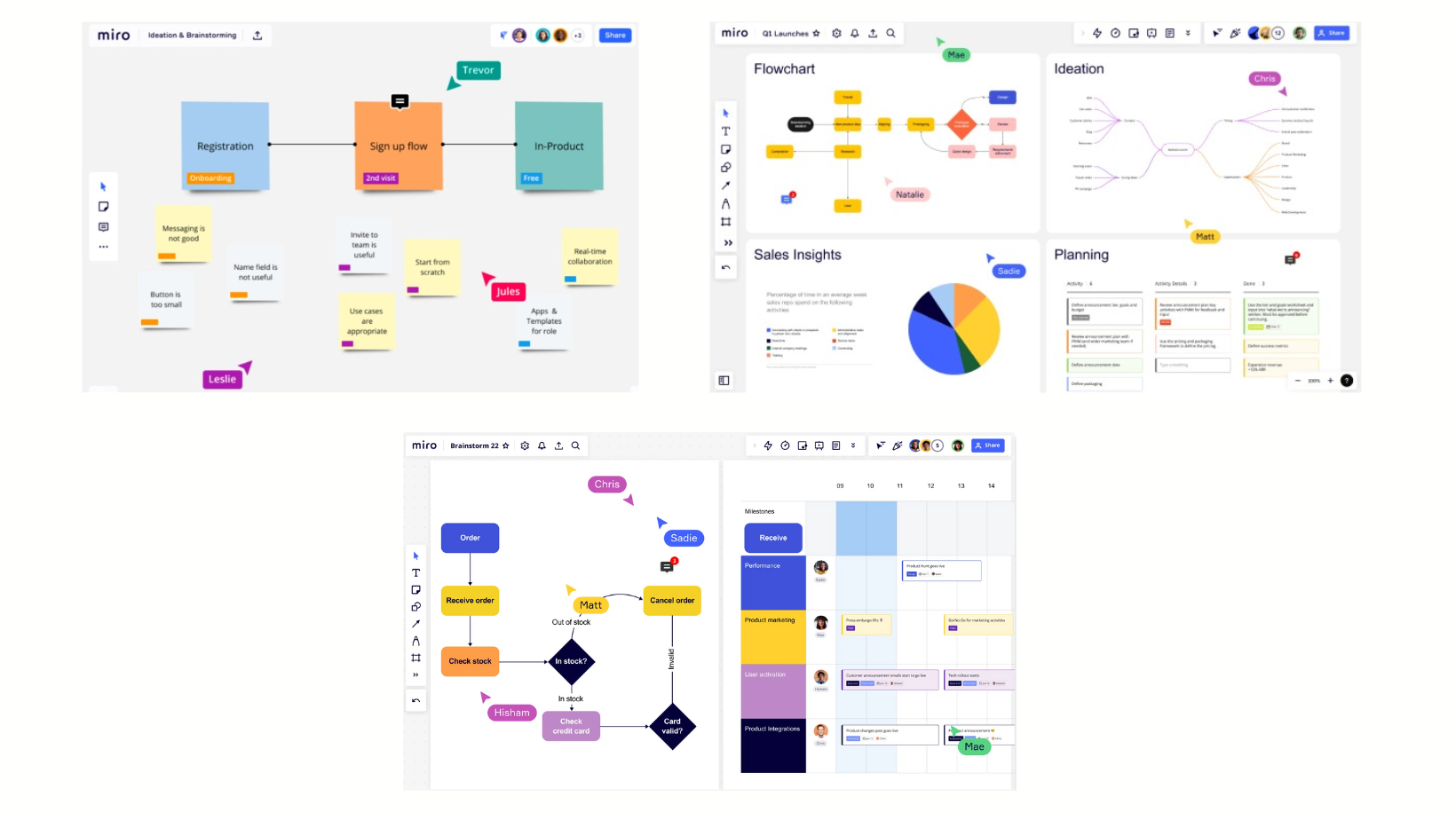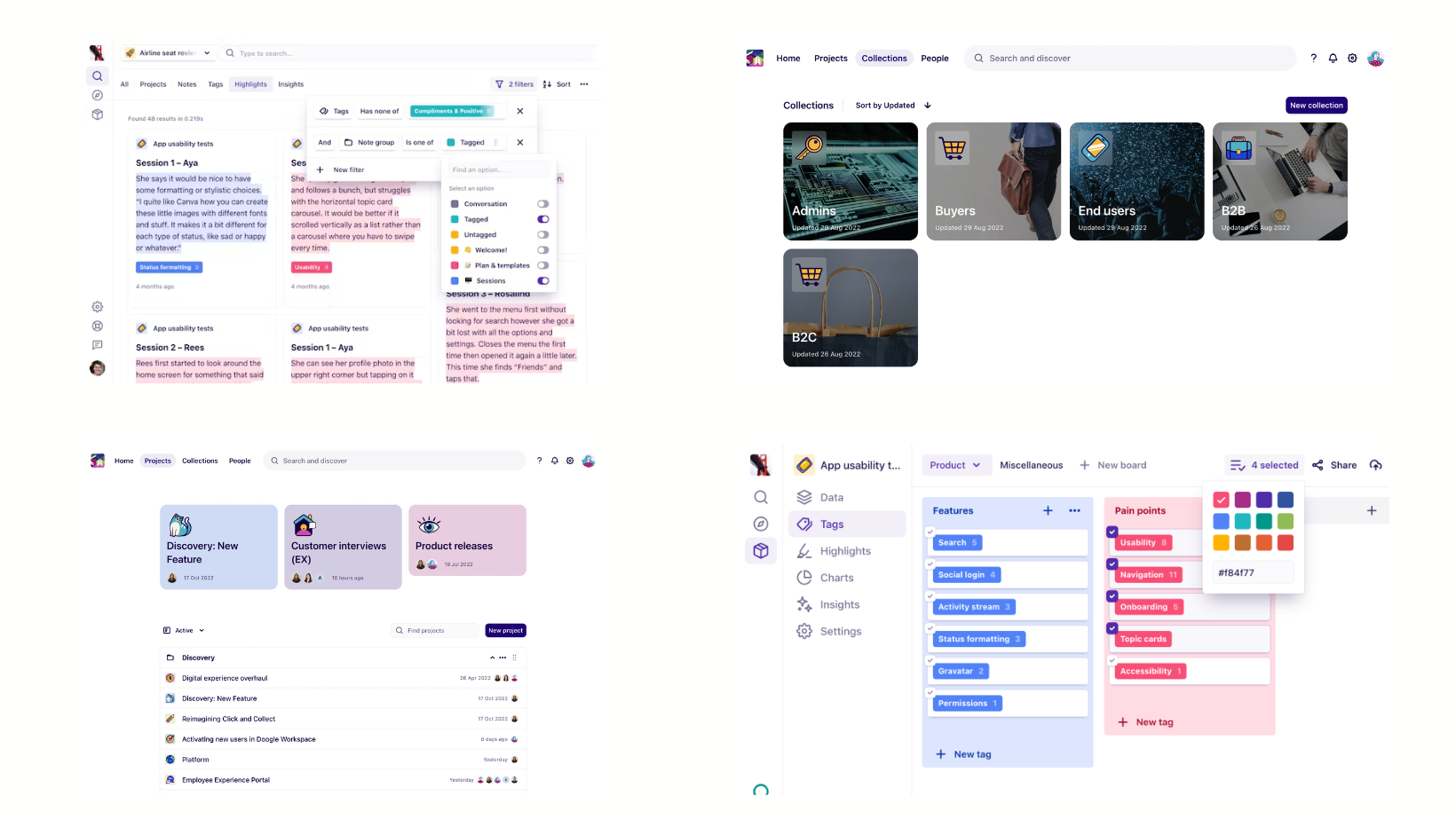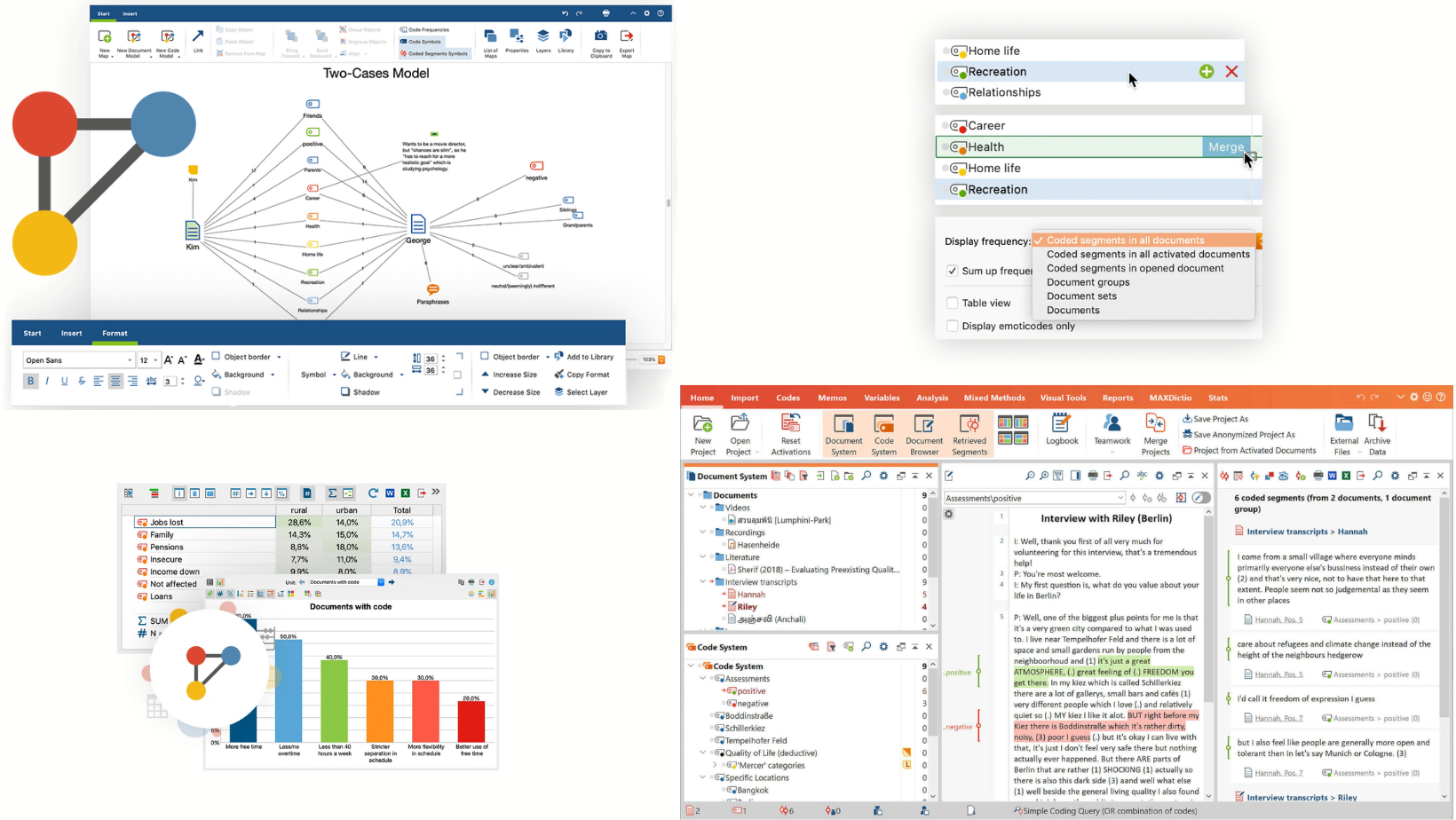🪄Our favourite research analysis platforms
4 essential products for a holistic research analysis toolkit.

Written by: Tarushi Mohan
Qualitative research... it’s the realm of transcripts with hidden meanings, intricate narratives, and mind-boggling interpretations. It's like diving into a conversation and trying to make sense of the content floating around. But fear not, fellow researchers! Today, we bring to you a list of light-to-heavy online tools for embarking on this journey of data analysis.
Evernote

Memoing is as important as coding and structuring your data in qualitative research. Going through pages and pages of data, those sudden bursts of ideas need to be penned down. Evernote allows you to capture, store and organize various types of information in the form of text notes, attached files, images, recorded audios, and even hand-written notes. You can also add tags, create notebooks and access search options for easier organization. Biggest USP: available across different devices and platforms, including smartphones, tablets, and computers, enabling users to access their notes from anywhere.
It does not offer any kind of analysis or data representation tools. It is purely for memoing and you cannot really play around with the data you dump in here.
Verdict: This is not where you go when you want hardcore analysis. This is where you stop midway to pen thoughts, notes, ideas in whatever form you’d like. Given that the majority of its features don’t require a paid subscription, it is extremely light on your pocket.
Miro

Not a conventional tool in this space, Miro offers a fresh approach to collaborative analysis using a virtual canvas. A web-based and mobile application, it is essentially a whiteboarding platform enabling teams to work together, remotely, but it can be wonderful for focus group activities, brainstorming sessions, user journey mapping, card sorting and affinity mapping exercises. In addition to generating visual content, teams can also add comments, annotations, and tags to enhance collaboration and facilitate coordination.
It does not offer thematic coding or graphs but facilitates brilliant mind mapping and brainstorming sessions for you and your research team.
Verdict: Miro is a powerful tool that is particularly useful for collaborative research methods. It excels in facilitating interactive sessions with groups of any size. It also provides a UX friendly space to dump and organize thoughts into themes after analysis. However, if your main focus is structured coding and analysis, then consider Dovetail or MaxQDA (reviewed below) instead.
Dovetail

An easy-to-navigate online platform, Dovetail is like the Gen Z of qualitative research analysis tools, given its vibrant layout and a creative user-friendly UI. Dovetail offers thematic coding as well, but with better visual style and panache (you’ll see what I mean) than most of its peers. This platform triumphs over others in its ability to create presentations (in the form of ‘stories’) and visually appealing insight cards. You can use pictures, font options, emojis and tables to make interactive reports. Icing on the cake, these reports can be exported as PDFs and shared with anyone.
The area in which Dovetail loses out a little is the unavailability of graphs and other mixed methods tools. They do offer charts to compare code frequencies in transcripts but that is about it. Don’t expect to see too many statistical representation options here.
Verdict: If you’re looking to do only thematic coding with simple frequency analysis, Dovetail is your answer. Being a web-based application, there is no downloading heavy softwares and the pricing options are quite light on the pocket. If you’re into heavy mixed methods, MaxQDA below might be your answer.
MaxQDA

One of the most powerful analysis tools out there, MAXQDA is your one-stop shop for mixed methods analysis. In addition to seamless thematic coding and organization of data, it offers an array of visual graph options to identify and represent themes, patterns and data relationships. One of its biggest USPs is the option to thematically code pictures and audios, in addition to text.
Coming to limitations, it is a computer software program at the end of the day, which does feel heavy on your system memory. Add applying for a license along with a (substantially!) pricey subscription and you do end up wondering whether it’s worth the effort (and money) or not. But here's a tip: If you have a student ID, you can get a much cheaper subscription.
Verdict: If you have tons of transcripts with heavy thematic coding and are looking for creative ways to present your data, look no further than MAXQDA. On the other hand, if you’re just starting out and want to do some light coding, there are multiple web-based applications which don’t ask you to download software or pay a high subscription fee.
Qualitative research analysis tools are like your trusty companions, guiding you through the maze of data interpretation. They add a spark of excitement to the research journey, making it anything but dull and monotonous. With a wide array of interactive tools at your disposal and a touch of creativity, you can transform your research into a thrilling adventure. These tools enable you to uncover valuable insights and make sense of your data in an engaging and dynamic manner. So, let the exploration begin!